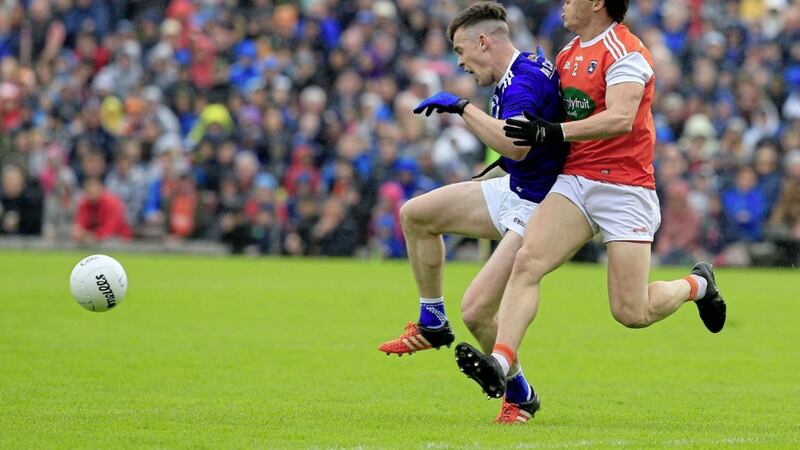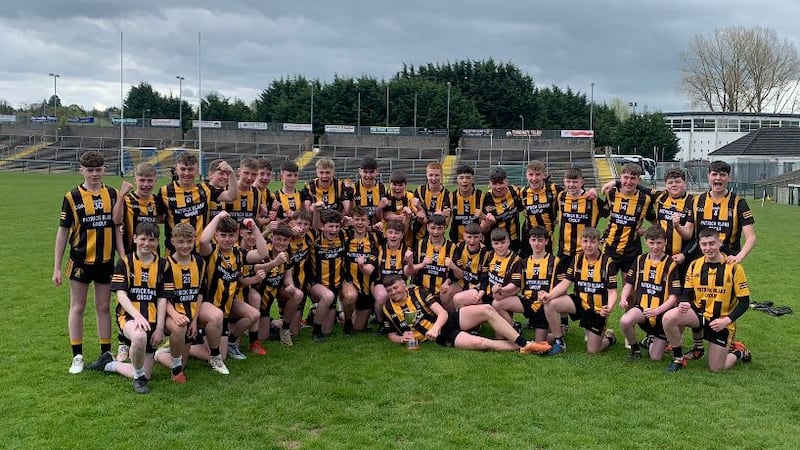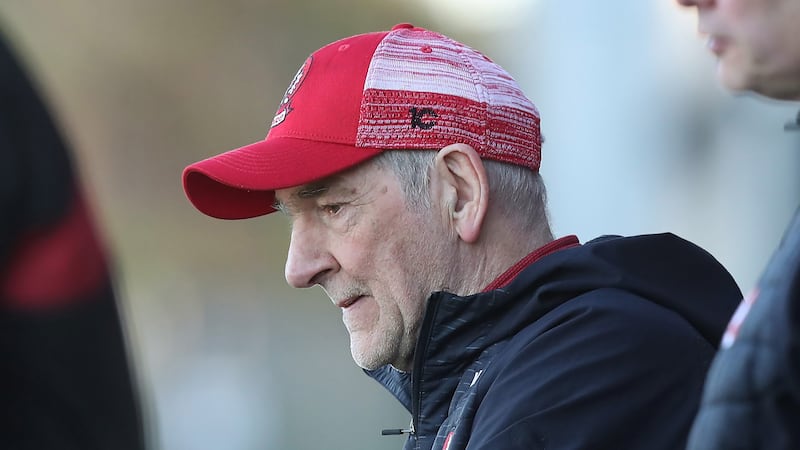THERE are those in Cavan that would point to their lack of attacking ability as something of a fallacy.
Joe Brolly christened them “the Black Death” and the tag has stuck. Even though Terry Hyland had them playing a bit of ball and even though Mattie McGleenan’s biggest issue was defensively, they’ve found the reputation as an ultra-defensive team hard to shake.
Like most things, you can find statistics to aid whichever argument you choose. Take their total of 5-75 in this year’s National League, the lowest in the top tier and behind only Fermanagh and Kildare in the top two divisions.
Three of the goals came in one outlier against Roscommon.
Yet what that tally really screamed was not about their lack of willingness to play on the front foot, but simply their inability to find ways of manufacturing scores.
Because while they’ve had a will, they haven’t always had a way. A huge part of that has been the cyclical nature of their inside forward line.
This spring’s great white hope was Conor Madden, who became the focal point of their attack at full-forward during the league. But while he’s had moments of influence, his summer hasn’t hit the same heights.
And in his defence, that role has been changed. The go-to man in attack is once more Dara McVeety.
He’s been earning rave reviews for his performances in a ‘new role’ at full-forward, except those with sharper memories will recall that he was playing arguably even better football last spring before suffering a hamstring injury in the Division Two final that ruined his year.
Despite not being the biggest or the tallest in the world, McVeety is well able to handle himself in a scrap for the ball. Lightning quick across the ground, strong, direct and with the ability to finish, he has looked every inch the answer to their problems in recent weeks.
A lot came off him in the replay against Armagh, although maybe not quite as much as might have were he not a shade wasteful with some of his possession.
* * * * * * * * * * * * *
CREATING SPACE AND RUNNERS FROM DEEP
YOU don’t need to have studied Dublin in any great depth to understand that the width of their attacking play and the creation of space in the right areas is central to their success.
It has become the ultimate in attacking strategies in terms of breaking down massed defences, and has clearly been at the forefront of Mickey Graham’s work with Cavan over the last few months.
There were occasional signs of it during the National League but the relentless way in which they went at Monaghan in their Ulster opener was a bolt from the blue.
It was all about width, movement and rotation, an exhausting cocktail that partly explains why they went so flat in the second half of that game.
Take this first half score that day from Conor Rehill as the prime example.
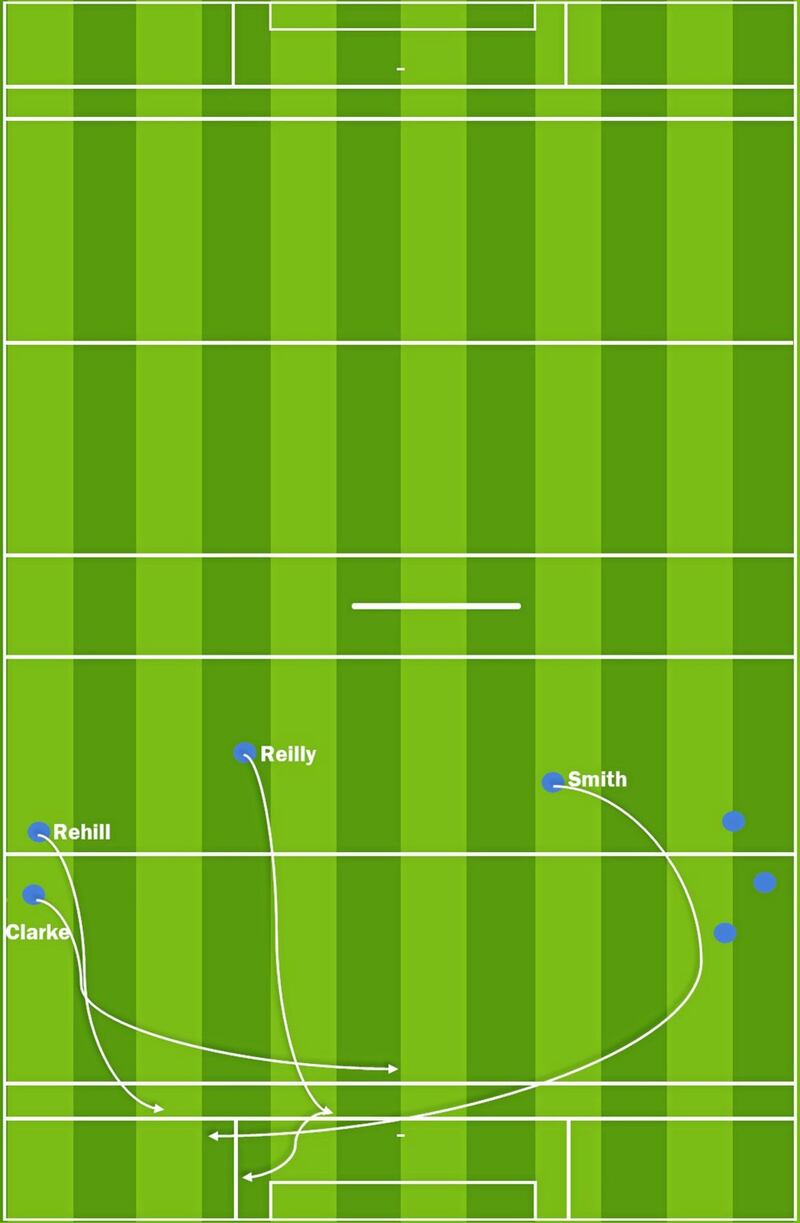
Monaghan manage to hold them up just beyond the 45’. Gerard Smith has the ball on one wing with options outside, while Killian Clarke and Conor Rehill hold the width on the other wing.
Smith lays the ball off and heads at three-quarter pace on a loop in towards full-forward.
Killian Clarke’s had the same idea on the other wing and sprints into the position. Marty Reilly too.
Yet despite three men having the one thought, they never cramp the space. Clarke takes up the full-forward berth, Reilly goes out into the corner again and Smith comes right around the back and shows for the ball.
Clarke’s run has also taken the cover away on that wing and allowed space for Rehill. He kicks the ball to Smith, who wins it on the 21’ and pops it back for a score.
That was typical of the way in which their attack operated, and it proved hugely effective in pulling Monaghan around sufficiently and opening gaps where Cavan needed them to be opened.
Monaghan were also so uncharacteristically bare down the middle of their defence that Cavan got joy off the kick pass.
* * * * * * * * * * * * *
THE DIFFERENCE AGAINST ARMAGH
A HUGE part of why Dara McVeety had such a major influence on the replay win over Armagh owed a lot to their opponents’ setup.
With Brendan Donaghy suspended, Kieran McGeeney resisted the temptation to go like-for-like and put Greg McCabe in that role. Clearly feeling that Cavan could be got at, Armagh went man-for-man.
Cavan scored 23 points, their biggest championship tally since they hit 2-17 in the crazy replay defeat by Tyrone a few years ago, in which their goals came late on.
As much as you can point the finger at Armagh, there has to be a degree of credit for Cavan and the way in which they kept punching the right holes.
There was a lot more of a full-time structure to their attack than against Monaghan. McVeety largely held a position at full-forward, encouraged by the way Armagh left space in front of him.
Armagh played into their hands, but Cavan never allowed themselves to become predictable or static. They kept their width – something they hadn’t done as well in the drawn game – and kept getting runners in behind.
A typical routine was the one that created their best goal chance on Saturday evening for Niall Murray.
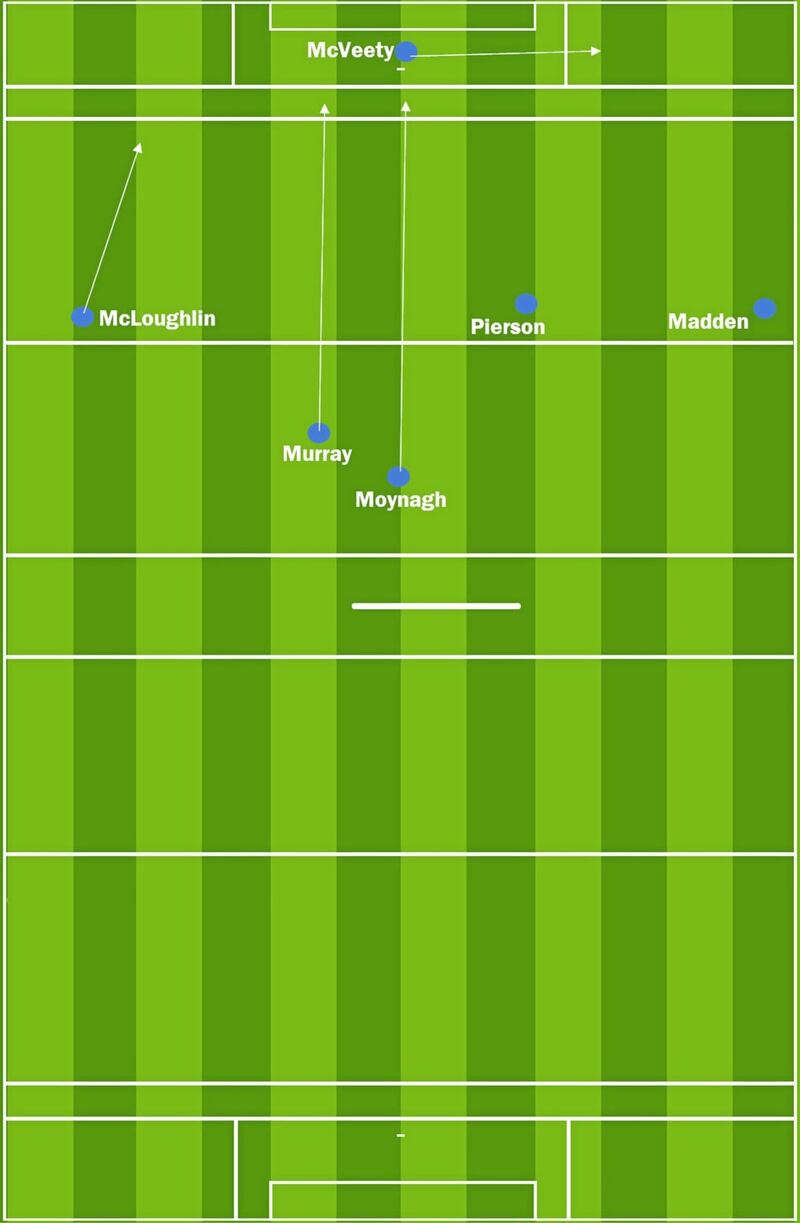
CONOR Madden has the ball out on the right wing in the early stages of the attack. Dara McVeety is at full-forward on his own, with a line of men around the Armagh 45’.
Conor Moynagh takes off from deep at three-quarter pace down the middle of the attack. The ball isn’t near him. McVeety sees this and heads for the wing, vacating the space in front of goal.
Meanwhile, Jason McLoughlin has come up from corner-back and taken a position out wide on the left, just inside the Armagh 45’.
Madden brings the ball across from the right wing and with one incision by Niall Murray, they blow Armagh apart.
It’s about timing and positioning. McLoughlin sees Murray coming and knows he’ll draw a defender, allowing him to pop into the space in behind the full-back line. He does so and plays a one-two with Murray, who rounds Blaine Hughes and hits the post.
By the time he’s coming in on goal, Conor Moynagh has done the same as McVeety did. When he got to full-forward, he saw the runner coming down the middle and he too headed for the wing to vacate the space.
Playing against a side with no sweeper, it was always a plan that was going to create chances down the middle.
So as much as scoring 0-23 was a positive, they will no doubt be concerned by the lack of bona fide goal chances they’ve created.
McVeety is the one real head-down-and-drive forward they have. Gearoid McKiernan’s deeper positioning has worked well for him, as it has in previous seasons, but in order to trouble Donegal, they will need to find something else.
* * * * * * * * * * * * *
DONEGAL BEST TO STICK TO THEIR TYRONE TEMPLATE
DECLAN Bonner caught most of us out with the way Donegal set up in their semi-final win over Tyrone. After an opening that was end-to-end, Jamie Brennan’s goal marked the change in the game.
With a lead to hold, Donegal sucked bodies back behind the ball and swallowed up Tyrone’s hopes of a kick pass.
The Red Hands didn’t see it coming and weren’t set up to run the ball, with the result being a perfect stifling job by the Tír Chonaill men.
Cavan would not carry the same attacking threat as Tyrone, yet if Donegal were to leave themselves exposed in terms of defensive numbers, they could pay a heavy price.
Even though they’d clearly fancy themselves in a shootout, it could be taken as a sign of complacency were they to revert to a more attacking approach.
Because while opening themselves up would create a more end-to-end game that they’d still fancy themselves to win, operating off the template from the Tyrone game would almost certainly see Donegal win the Ulster title again.
It is hard to see how Cavan would break it down often enough to claim a first Anglo Celt in 22 years. Stationing Hugh McFadden in front of McVeety would either force him deeper or shut him out of the game.
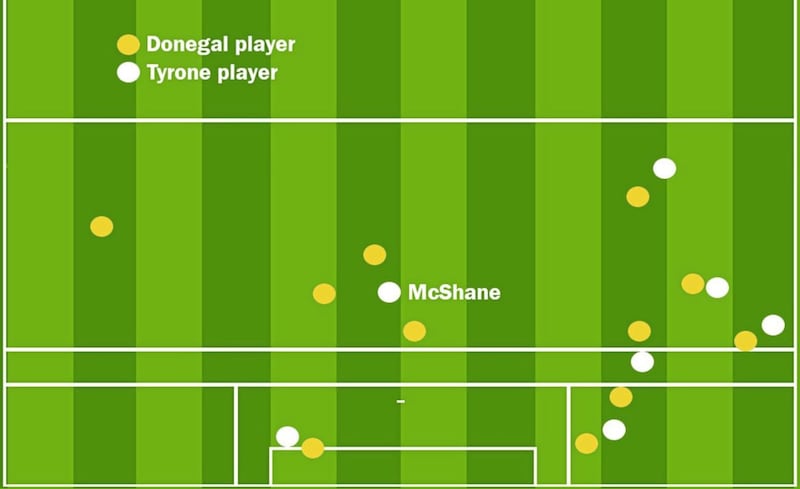
They were clearly worried about Cathal McShane and the perfect example of how they closed him down was after 15 minutes, when Richie Donnelly’s perfect low kick across the face of goal met the Leckpatrick man in the perfect position to get a shot off.
He’d peeled out in front of McFadden, but no sooner had he won the ball than three men converged. McShane had to recycle it and Tyrone were eventually turned over.
Monaghan’s big downfall against Cavan was that they didn’t commit enough bodies to either defence or attack, and played in a halfway house where they tried at times to push up, but never quite went hard enough at it to have the right offensive imprint.
Armagh pretty much went man-for-man, and scored 17 points themselves in the replay.
Cavan’s attacking play to this point has been inventive and brilliantly orchestrated.
But if Donegal have their homework done and are prepared to close off the middle and let Cavan have the ball out wide, then there surely can only be one winner.
